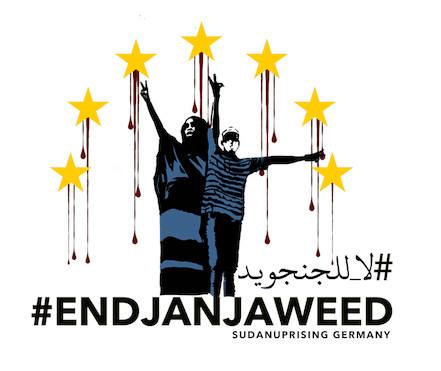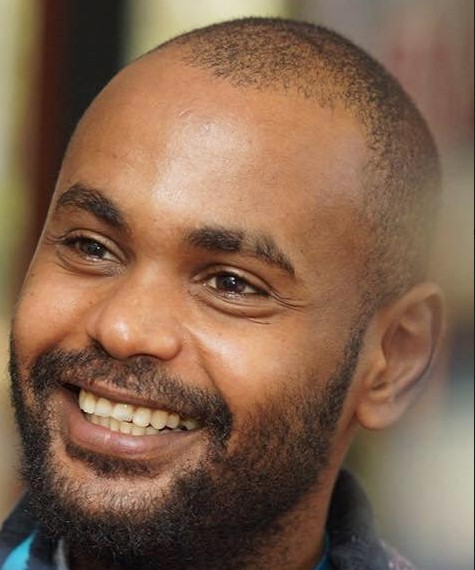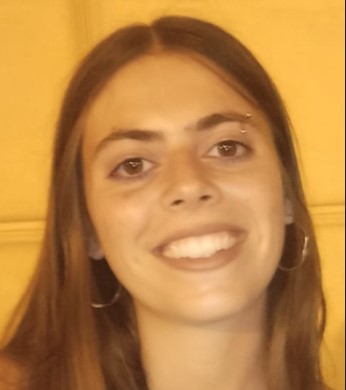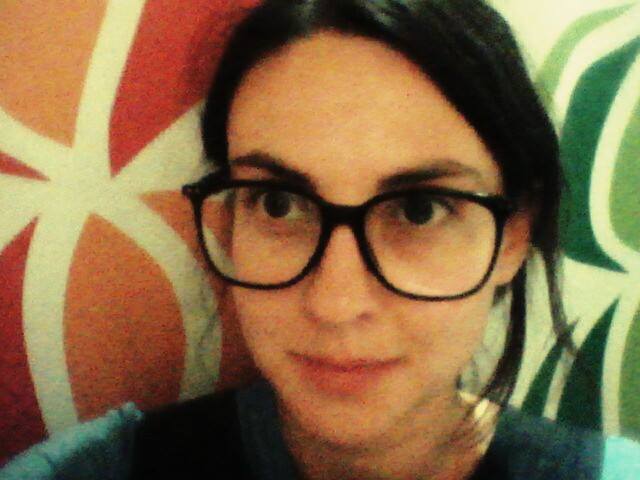Note from LeftEast editors: this pieces is a conversation between Ana Vilenica and Lucilla Lepratti and Ahmed Isamaldin from SudanUprising Germany. It was recorded on 2 July 2023 to explore the work of SudanUprising Germany in raising awareness about the Sudanese revolution and the ongoing war. Ana and Lucilla are part of collectives that signed the group’s petition and shared a statement in solidarity with the people of Sudan, shortly after the eruption of the war on 15 April 2023. With this conversation we would like not only to gain deeper insights into the Sudanese revolution and its dynamics, but to nurture stronger international bonds among revolutionary struggles worldwide, placing special emphasis on solidarity between the Sudanese and LeftEast movements. The interview has been edited to preserve its conversational form.
The Roots of Conflict, Resistance, and Revolution in Sudan

Ana and Lucilla: The Balkans and North and East Africa have been similarly constructed from the outside as problematic areas. When it comes to border politics, their relationship is complex. People from Sudan have been traveling through the Balkan route across territories in Eastern Europe which have been constructed as external borders of the European Union. There is very little knowledge about the history of Sudan. Could you tell us a little bit about what became known as the Sudanese revolution and the reasons behind it? You mentioned previously that organizing was inspired by specific struggles in Serbia. We are very curious to learn more about these connections.
Ahmed: To situate the revolution in a way to create this connection, we need to go back in time just a little bit to Sudan’s old regime, which is the regime of Omar al-Bashir. It was an isolated regime. We call it an Islamic dictatorship, because its background is the Muslim Brotherhood in combination with military rule. The pro-democracy movement in Sudan had been, over time, led by classical and traditional political parties and even modern leftist parties like the Communists. But those parties kind of eroded from within their own structures. They were not strong enough to survive the rule of Bashir. From 2010 on, a new movement appeared in Sudan’s political scene, a youth movement, which is similar to what you have experienced in Serbia, probably; the pro-democracy movement. And some of those movements learned their political work, which is mostly nonviolent revolutionary work, from the Balkans’ movements, particularly in Serbia. So, for example, I was part of this movement called Girifna (“We Are Fed Up”). Later on, we understood that they called us a ‘colored revolution’, they called us pro-American, pro-democracy. But we wanted to learn from the nonviolent revolution, regardless of the ideology, because it was non-ideological, it was pro-democracy, for freedom. People came from different backgrounds, some of them from the grassroots left, some of them from a liberal perspective. And we learned from the Otpor! (“Resistance”) student movement in Serbia in that particular time.
Ana and Lucilla: Your logo was like the one Otpor had?

Ahmed: Yes, if you see Girifna’s logo, they actually took it from the Serbian movement’s logo. This was the first youth non-party movement in Sudan and it started in the same tradition of putting pressure on political parties to unite against the regime and asking them to have a public conversation with each other. This movement grew, and alongside different forces developed to be a revolutionary movement to bring down the government. It opened the way for big traditions of non-party politics, a non-party revolutionary movement that built gradually toward the revolution of December 2018.
This is the superstructure of the revolution – the leadership, how it was created – but the reasons for the revolution were political and economic. The revolution started in 2018 as a bread revolution; because subsidies for bread and fuel were lifted in 2018 people organized to challenge the regime. This came after a tradition of demonstrations and protests had been created by the pro-democracy movements from 2010.
In 2018 there was a spontaneous movement happening in Atbara, a city in Northern Sudan, and some people say there was a student demonstration somewhere else, too, but it’s not confirmed. This is what we know: The biggest demonstration was in Atbara, which is a workers’ city. And from there on, the syndicates – which in Sudan are not called syndicates but, rather, professional associations, which are independent nongovernmental organizations for workers and employees that decided to lead the revolution – created coalitions with existing pro-democracy structures. One of them was the Girifna movement, another was the “Change Now” movement, which are the movements that learned their political work and their skills from the Balkan traditions. These kinds of coalitions of syndicates and unions led the first part of the revolution, as we call it, which toppled the old regime and its head, Omar al-Bashir, on 11 April 2019. They organized the sit-in in front of the military headquarters, to put pressure, to topple Bashir, and fortunately Bashir fell, but the political structure that he had created to dominate the country still existed. This structure consists of military power, the security apparatus, and some militias that Bashir created to brutalize and to plunder the rural areas and also to suppress revolutionary and pro-democracy movements. All of the leaders of these apparatuses stayed in power.
After that, another military guy came to power for one day. The sit-in demanded that this guy also leave and he left, and then the sit-in turned to demanding full civilian power and for all of Bashir’s regime and his security apparatus to leave political power for good. And that sit-in got radicalized and its demands got clearer and clearer because it was open for political participation, in the same way as the Tahrir sit-in in Egypt, or Maidan in Ukraine at a particular point. It was a place for political conversation, a school for ideological building. It complicated and radicalized the demands of the revolution, through a look at Sudan’s history and to see that the problem of Sudan, historically, is militarization and centralization of power.
Unfortunately, this sit-in was brutally evicted on 3 June 2019 by the military and security apparatus that Bashir had left behind, these are the same coalitions of army and militias and the security apparatus that are fighting now in Khartoum. What happened was that the international community and some traditional reformist political parties took this opportunity, after the eviction of the sit-in, to undermine those radical demands and to create a model of power based on participation of civilians, classical political parties, traditional political parties and the army. And that’s the model that governed Sudan in what we call the “transitional period”.
During this time, another radical movement came to be, which is that of the Resistance Committees. These movements are all metamorphoses of each other, they are not separate. For example, you will find in these committees people from the Girifna movement from 2010, that learned the skills or the traditions of nonviolence. These struggles for democracy took part in creating the new cells of what we later call the Resistance Committees, which are leading the revolution now. In time, people started to get more mature in terms of organizing. In the beginning, there were pro-democracy, demand-based movements like Girifna, “Change Now”, and others. Later on, it became the Neighborhood Resistance Committees, a movement of committees that organize on a neighborhood level across urban Sudan.
The Resistance Committees
Ana and Lucilla: Who is leading the revolution now?
Ahmed: The movement that continued to fight back even during the transitional period, that of the Resistance Committees. We knew that the army was going to attempt a military coup because it wanted to have a coalition with traditional parties and then isolate them from civilian voices in the streets. We saw what happened in Egypt and Tunisia, and we saw what happened in a lot of countries where the army isolated big political parties from the masses and then attacked them by staging a military coup. That is exactly what we then saw in Sudan. The army was part of a coalition with the civilians and was leading the Sovereignty Council. Then there was a time when the civilians were to take over the presidency of the Sovereignty Council. And on that very day the army staged a coup, put all of the political parties and civilians in prisons and started to brutalize the Resistance Committees. But what also happened on that day, is that the Resistance Committees – because they had predicted that the army was going to take the power – were already preparing the streets, and thus automatically took the leadership of the revolution. Those young women and men organized together in their neighborhoods, as they had been doing during the transitional period. They had foreseen that the army would not cede power without resistance. And then the army did indeed bring the military to dominate the political sphere in Sudan. This is what turned the Resistance Committees into the ultimate resistance and in a way, into avant-garde revolutionaries.
The Resistance Committees drafted something called Mithaq, which means Revolutionary Declaration for People Power. It was very radical, talking about governance from below, decentralization of power, openness to political participation, redistribution of wealth based on social justice, and deconstructing the colonial state inherited in 1956, brought about by colonialism. It is actually translated and published on the group SudanUprising Germany’s website. That declaration was written together by various Resistance Committees in neighborhoods all over urban Sudan.
And that was the history of the revolution until the 15th April 2023, when the war broke out and fractions of the military began fighting each other. This is why demilitarization of political power was a demand of the revolution; to avoid violence. We wanted to end this cycle, what we call the cycle of evil in Sudan, which is when anyone with a weapon can take power through the military or by creating an armed force in the margins and then coming to Khartoum and taking power. And in the end that’s what happened, the two factions in the army started fighting in the streets of Khartoum.
Ana and Lucilla: Could you please tell us a bit more about the local committees? How are they organized and what has been their actual practice? Are they organized on a model based on leadership or has it been a more or less horizontal structure?
Ahmed: They don’t have leadership. They are horizontal, basically collectivized among neighborhoods. They have task forces, but they don’t even have a spokesperson. They just have demands.
The Resistance Committees were against the recipe for mediation introduced by the international community through the UNITAMS, the United Nations special mission in Sudan. UNITAMS wanted to mediate between the civilians and the army again, to create a model of shared power between them. The Resistance Committees say: “No, we tried that, but it will not go through. The military must leave power. The military doesn’t have a right to govern through force. They must go back to their barracks.”
Another part of their slogans is against the militias created by Bashir, which were created to basically plunder and extract surplus from the rural area of Sudan. They are very brutal. They were created, organized within ethnic groups, to sustain Bashir’s power, to suppress the revolutionary forces on the margins of Sudan and to surplus from the margins to bring to the center, to Bashir. The militias were created as parallel forces to the classical army, because Bashir also had a problem of trust in the army itself. He wanted to create a multisystem of violence. A multi-apparatus of violence. A number of militia are united in the RSF, the Rapid Support Forces. Some of the demands of the Resistance Committees are based on the claim that the RSF is a deformed institution; that this institution doesn’t look like a state institution and therefore it shouldn’t exist. The RSF is a brutal institution with a long history of crimes. It has to be dissolved. It cannot be part of Sudan’s future.
We could romanticize the revolution, but it is true that a part of the revolutionary forces only wants to bring the nation back to its unity and to modernity and democracy. It is not only a radical revolution. Some of the people think that this militia doesn’t fit in the modern nation state and we therefore need to remove it. And other people want to engage with this topic critically and discuss why militias were created in the first place. Ultimately, everybody agrees that these militias, especially the RSF, are very brutal. It is worth noting for example that the RSF took part in the violent eviction of the June 2019 sit-in.
Nobody can co-opt a movement without centralized leadership. But the movement has never had the chance to have direct negotiations. The Resistance Committees negotiated with demands articulated in 20 written pages, the Mithaq. They have also developed a smart mechanism to discuss their papers through a very complex structure, in which each Resistance Committee writes something and then they put it all in one pool. And there are a lot of volunteers working in this pool, who see the similarities in the drafts and put them together. This is how they created this Revolutionary Declaration for People Power. The main demand is to deconstruct the Sudan of 1956, colonial Sudan, and to build a new one, based on political participation and an end to any kind of militant forces outside state institutions.
The Resistance Committees internalized a lot of nationalist and patriotic ideas because they are a revolution in the Global South. You probably have seen that in some Balkan movements too, right? While there has been xenophobia and nationalism in the Resistance Committees. some other people worked hard to change that. Because the Resistance Committees emerged during the COVID pandemic the distribution of support was based on belonging to the nation (migrants from Ethiopia and South Sudan for example were excluded). But the Resistance Committees were able to learn before the war broke out and change these kinds of practices. It is a flexible movement that learns from its mistakes. Its ideology is very flexible. It’s changing based on discussions and conversations. It’s very dynamic because many people are part of it and many people can contribute with their opinions. If you have a solid opinion and you can convince many people of it, you can affect the entire Resistance Committees’ discourse. Part of the work of revolutionaries was to criticize xenophobia and nationalism, patriarchy, etc. This was also an area that was strategically infiltrated by a modern feminist movement in Sudan – I’m calling it modern because we had a classical one in Sudan through the nineties. Because of the work they did, the declaration of the Resistance Committees has a lot of feminist ideas.
Ana and Lucilla: What is left of the Resistance Committees now?
Ahmed: In the beginning they tried to create an antiwar coalition, and the first one actually collapsed because the classical parties wanted to dominate and manipulate it. The Resistance Committees were open to having parties in the coalition again, just for the anti-war discourse but the political parties thought of it as an opportunity to get the Resistance Committees under their control.
Sudanese political parties have a very deformed model that has to do with many years of repression. Those parties were very strong in the past, but then 30 years passed without practicing democracy. The Resistance Committees made a call for a united anti-war front and as an organized diaspora we answered that call, because we think of ourselves as an extension of the Resistance Committees and its voices in the European and the international base. And again, they [the parties] ruined that one.
But after the political parties attempted to control the coalition, the Resistance Committees came up with another plan, which was to observe the trauma of the war and to take up the state’s responsibility. They created the political discourse that led to a very politicized humanitarian support system which is called Emergency Response Rooms (ERR). It’s not meant to be an NGO co-opted by the international humanitarian system, but more so taking the state’s responsibility onto themselves. We are now going to continue our revolution and a part of it is to observe the trauma of the war and to sustain the civilian fabric through demilitarization, by making the discourse of civilian organization louder than that of military organization. By creating community kitchens, providing medicine, taking people in, fixing the infrastructure. The Resistance Committees decided to keep their structures and they created various bodies from their members. For example, the ERR are separate from the Resistance Committees, but at the same time they are not separate in a political sense. Rather, members of the Resistance Committees who wanted to take part in this effort created this name for themselves. And it is a successful model. Each ERR organizes mutual aid and community services based on the specific needs of their localities. The organization of these ERRs is based on people’s needs.
It is important to mention that the law in Sudan is suspended. It is very difficult to work as a nonviolent movement under these conditions. The members of the movement are facing kidnappings; we already lost four people from the Resistance Committees and around twelve have been kidnapped so far. The Doctors’ unions, along with unions and syndicates that were democratically elected during the transitional period are also supporting the Emergency Response Rooms. They’re also facing kidnapping; one doctor was forcefully disappeared, but they released him just two days ago. He was responsible for providing medicine to the Emergency Response Rooms..
The two warring parties understand that the Resistance Committees are building power through those Emergency Response Rooms. So they use violence to make the work of the Resistance Committees difficult and they also use the suspension of legality as a way to oppress people outside any rights framework. In the past they were using oppression tactics through the police and army, within a legal framework. Sometimes they were afraid of investigations that could incriminate them later. But now you could get shot and nobody knows who shot you because it’s a war and everybody has a gun.
We are now creating a website for the Resistance Committees in English to show what they are doing, with a map. They have social media representation. Each one of them has its own visual identity because, as they say: “we are a decentralized movement, therefore our colors have to be different, too”. Because they work within the neighborhoods, they organize physically. The one that I’m very connected to is Al-Jerif, which is a neighborhood in this particular area of Khartoum. I’m working with them particularly, because it so happened that it is where most of my friends are. They’re organizing a Community Kitchen, inspired by the Black Panthers’ Free Breakfast Programme, because we have a problem of food scarcity now.
A lot of economic problems are going to be faced by the people in Sudan within the next months if the next harvesting season is not successful. There is going to be a famine and not even the Resistance Committees can solve this problem. Thousands have left Sudan, but the majority of people fled to other cities within the country. Khartoum is one of the most brutal places, as well as Al Geneina in Darfur. A lot of the members of the Resistance Committees went to safer areas, which are the areas where the food is produced, where agricultural production is concentrated. And now there’s an effort among the Resistance Committees to help the farmers and to create the committees there, in order to have a successful harvest season that could overcome the famine.
If this model is successful, this would be a very big political victory. And it will change the narrative entirely by showing that, actually, there is no need for the state; no need for the army. There are young activists, who are able, with their radical ideas, to run the country and absorb the trauma of war, to cover basic needs and basic infrastructures for food production and distribution. I hope that the militias and the army will not understand what we are up to, otherwise they could just go there and shoot people.
Many people migrated to the rural areas. Now they’re trying to create a political model; a new coalition, but this time avoiding centralized political parties. The idea is to work with something that we inherited from the colonial system which is the native administration of tribal groups in rural areas. This is all in the making and it is slow because you have to communicate with a lot of people and the communication system is not as good as in the past. But there is political work happening now. These are trials and attempts.



